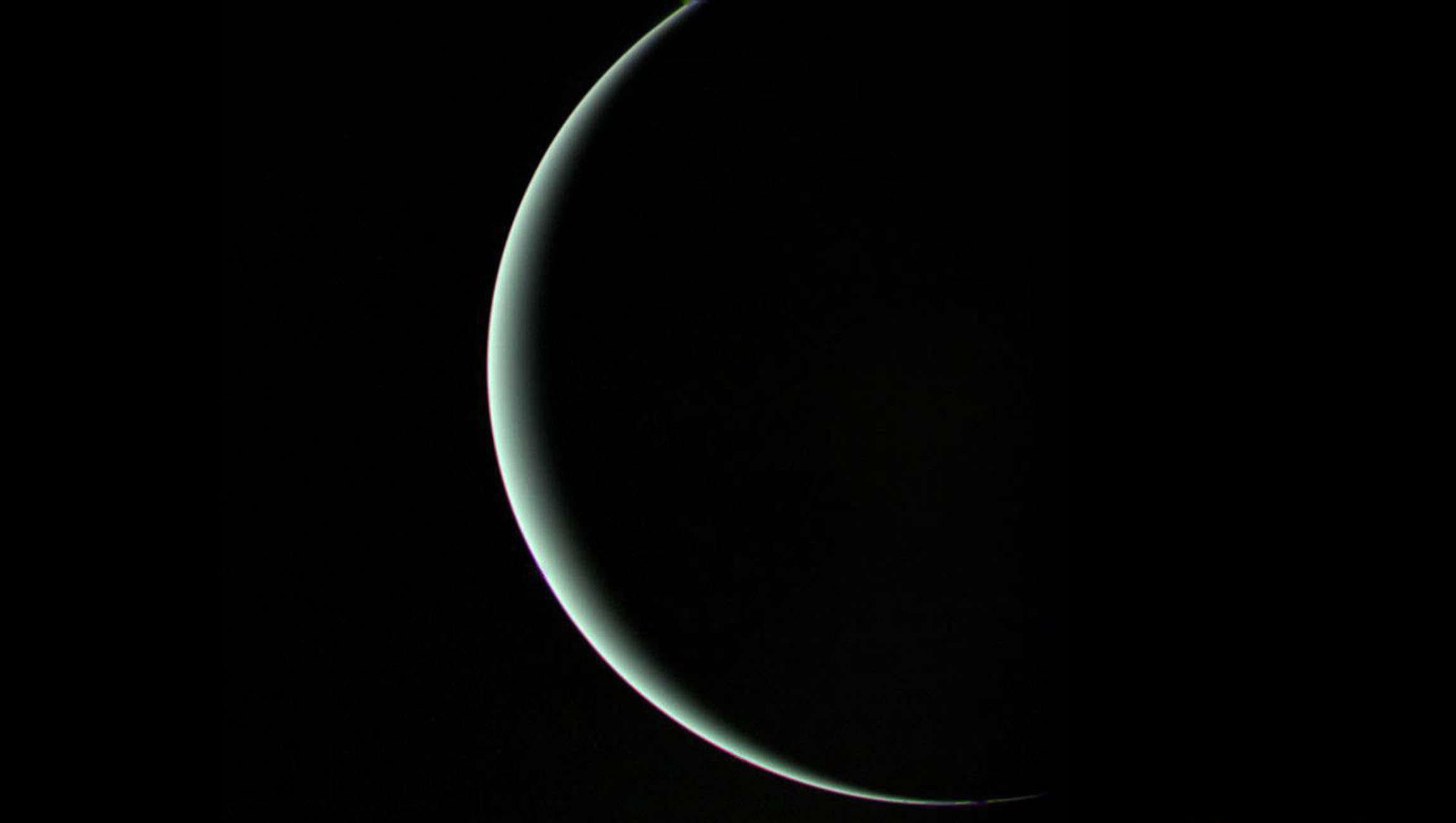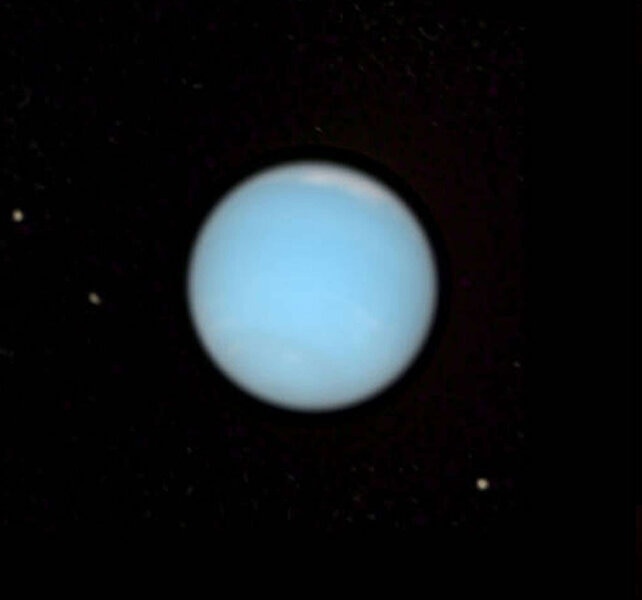Create a free profile to get unlimited access to exclusive videos, sweepstakes, and more!
An alternate (and really alien) version of water could be lurking inside Uranus and Neptune

Mars might be getting all the attention lately, but deeper in the solar system, there are unsolved mysteries on planets that even spacecraft have only ever seen on a flyby. Uranus (above) and Neptune (below) are just waiting to reveal things we can only imagine.
The last time a Neptune flyby happened was 1982 when Voyager 2 whizzed by the frozen giant, and a Uranus flyby followed in 1986. It isn’t that NASA or scientists in general don’t believe these planets have any importance. There are just greater priorities (Mars) to tackle right now. As NASA tries to get boots back on the Moon for the first time since the Apollo era and watches Perseverence search for signs of life or past life on Mars, Italian scientist Stefano Baroni and his team have been trying to find out what Uranus and Neptune might be hiding. Water could be one of those things — just not as we know it.
“Hydrogen and oxygen are two of the three most abundant elements in the universe, helium being the second,” Baroni said in a study he co-authored, which was recently publishe din Nature Communications. “As a consequence, H2O is thought to be a major constituent of celestial bodies formed far enough from their host star for it to condense.”
He and his team recently developed a simulation tool that can be used to analyze physical conditions and processes that would otherwise be impossible to reproduce in a lab. This is the case with the weird phenomena on both Uranus and Neptune. Simulations using this tool have helped the scientists figure out water’s thermal and electrical conduction power in its different phases, at least theoretically, and (also theoretically) examine the composition of Uranus and Neptune on an atomic level to possibly find out how these planets formed and evolved throughout billions of years.
The problem with investigating Uranus and Neptune is that not much is known about their insides. After running computer simulations, Baroni and his team believe that because of the abundance of the ingredients for water in the universe, it could exist on either or both of these planets in liquid, solid or superionic form. They were able to simulate what would happen to water exposed to conditions on either planet. These simulations revealed that extreme pressure and temperatures deep inside these planets would cause H2O to transition to its superionic state. Water enters this state when its molecules break apart, with oxygen ions (atoms which have either gained or lost electrons) crystallizing into a cubic lattice which hydrogen atoms freely float around in.
“Computer simulations may be our only handle on the properties of matter at physical conditions that cannot be achieved in the laboratory. In the case of water, they have allowed us to discover new phases5 and to predict their properties at extreme conditions,” said Baroni.
Water ice subjected to the conditions on these planets could also be superionic. This is not the stuff in your freezer. Superionic ice (Ice XVIII) is scorching, black and also extremely dense at four times the density of water. Scientists previously theorized that more water in the solar system exists as superionic ice than any other form it can take. Some believe it is even a new state of matter. Baroni’s simulations have already suggested that the conditions within Neptune and Uranus are ideal for water to morph into superionic ice, and that superionic water is possibly far more capable of conducting electricity beneath the magnetic fields of both planets, where it is thought to be found.
Uranus may appear like a glowing bluish orb, but it actually has low luminosity because of its innards. Dissecting Uranus would probably reveal mysterious thermal boundary layers, whose thickness depends on heat flow, and different phases of water are thought to occur in the interior. There are also bizarre electrical currrents at the bottom of its magnetic field. Similar phenomena have been found in Neptune. Further study could demystify the ice giants’ magnetic fields, which in turn may reveal even more about what goes on beneath the surface.
Mars and the Moon might be #trending right now, but a mission to at least one of these planets could beam back things that are downright mind-blowing.



























